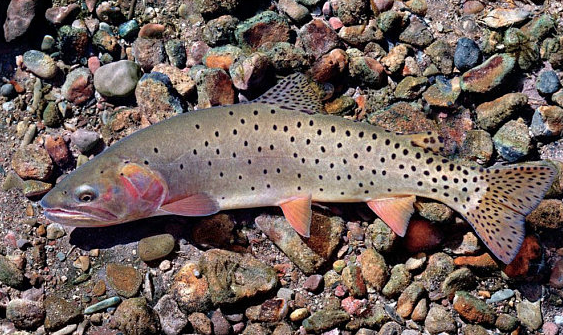We don’t all have trout fisheries in our backyards or even close to home. But in many “developed” watersheds across America, bottom-release dams designed for hydropower or flood control create stretches of cold rivers that can and do support healthy populations of introduced trout.
I suppose we could debate the merits of introducing a non-native species to a watershed—here at Trout Unlimited, we work to protect native trout where they belong for fear of losing them to hybridization and competition with introduced species. But, as long as there have been tailwater dams, there have been anglers with enough ingenuity and desire to bring trout to places they wouldn’t normally be found.
Consider Arkansas, if you will. This Mid-South state has a host of fertile tailwaters that pulse with introduced trout that swim the cold-water stretches of rivers like the White, the Red, the Norfork … the list goes on. And, with trout comes Trout Unlimited. About seven years ago, the White River Chapter of TU participated in an effort to introduce Bonneville cutthroat trout to the White and Norfork tailwaters. The chapter and its partners in Arkansas just got another 50,000 Bonneville cutthroat trout eggs from a hatchery in Wyoming—enough to continue the effort the propagate Bonnies in a watershed about 1,000 miles from its native Great Basin native range.
These days, anglers in Arkansas are catching Bonnevilles in the 18-inch range, and the Ouachita and Ozark mountains of the natural state are now a trout-fishing destination. Tailwaters, passionate trout anglers and TU. I always like to say that, as we work to fulfill our mission to protect and restore trout and salmon all over North America, there’s always a happy accident: We make fishing better.
Here’s what else is happening in the TU universe these days:
- Here’s a cool story about the Kalamazoo River in Michigan. A century ago, it was a waste canal. Today, it’s a thriving smallmouth bass river. And some of its smaller tributaries? Full-on trout streams. Restoration rarely happens in the blink of an eye, but when it happens, it’s almost alwasy good for everyone.
- A water-saving pilot program that TU helped broker in the West has expired, but good results might bode well for its renewal. Check it out.
- Southwest Colorado’s Animas River remains troubled by abandoned mine runoff, but there are some quick fixes that could help significantly, including operating a treatment plant at full capacity. TU has worked for years to get a law passed—the so-called Good Samaritan bill—that would allow outside groups to start cleaning up old mine sites without shouldering the pollution burden. That may be a long-term fix, but for now, running treatment plants at maxium capacity can help rivers heal fast
- Big things are happening in the Delaware River basin in New Jersey, and TU is a part of them.
See what I mean? We work every single day to achieve our mission. Better fishing? That’s a wonderful bi-product of the work TU’s staff and volunteers tackle around the clock.
— Chris Hunt



